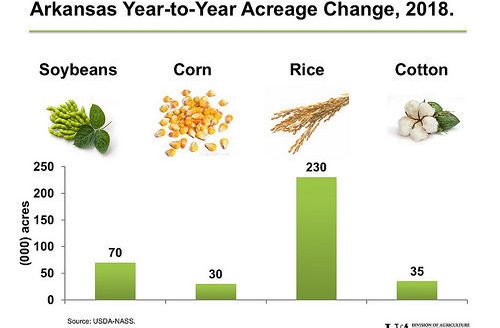Furrow-irrigated rice handbook available
Furrow-irrigated rice has been gaining ground, increasing from less than 1% to 10% of total rice acreage in Arkansas in the past five years.
A new handbook from the University of Arkansas System Division of Agriculture provides rice growers with the latest research and recommendations for furrow-irrigated rice.
The “Arkansas Furrow-Irrigated Rice Handbook” provides research-based information about selecting cultivars, establishing stands, and managing fertility, weeds, disease, insects and irrigation. It also provides information about budgeting and crop insurance, which became available for furrow-irrigated rice earlier this year through the U.S. Department of Agriculture’s Risk Management Agency.
The publication is available on the Cooperative Extension Service website at https://bit.ly/ArkRiceHandbook.
In 2019, 1.1 million acres of rice were harvested in Arkansas, accounting for 46 percent of total U.S. rice production. Most of that acreage relied on flood irrigation.
Furrow-irrigated rice, also known as row rice or upland rice, has been grown in small pockets of Arkansas for more than 30 years. This method eliminates the need for constant flooding. Instead, small channels—or furrows—are dug between the rows and carry water to the crop.
Five years ago, this method was used on less than 1 percent of rice acreage in Arkansas. Now, it accounts for 10% of rice acreage, according to Jarrod Hardke, rice extension agronomist with the University of Arkansas System Division of Agriculture. Similar increases in adoption are occurring in the Missouri Bootheel and northeast Louisiana, Hardke said.
The primary reasons for furrow irrigation are to simplify crop rotations and decrease time and expenses associated with flood-irrigated rice. Additional benefits could include water savings, which will prove more beneficial as water resources are further depleted.

